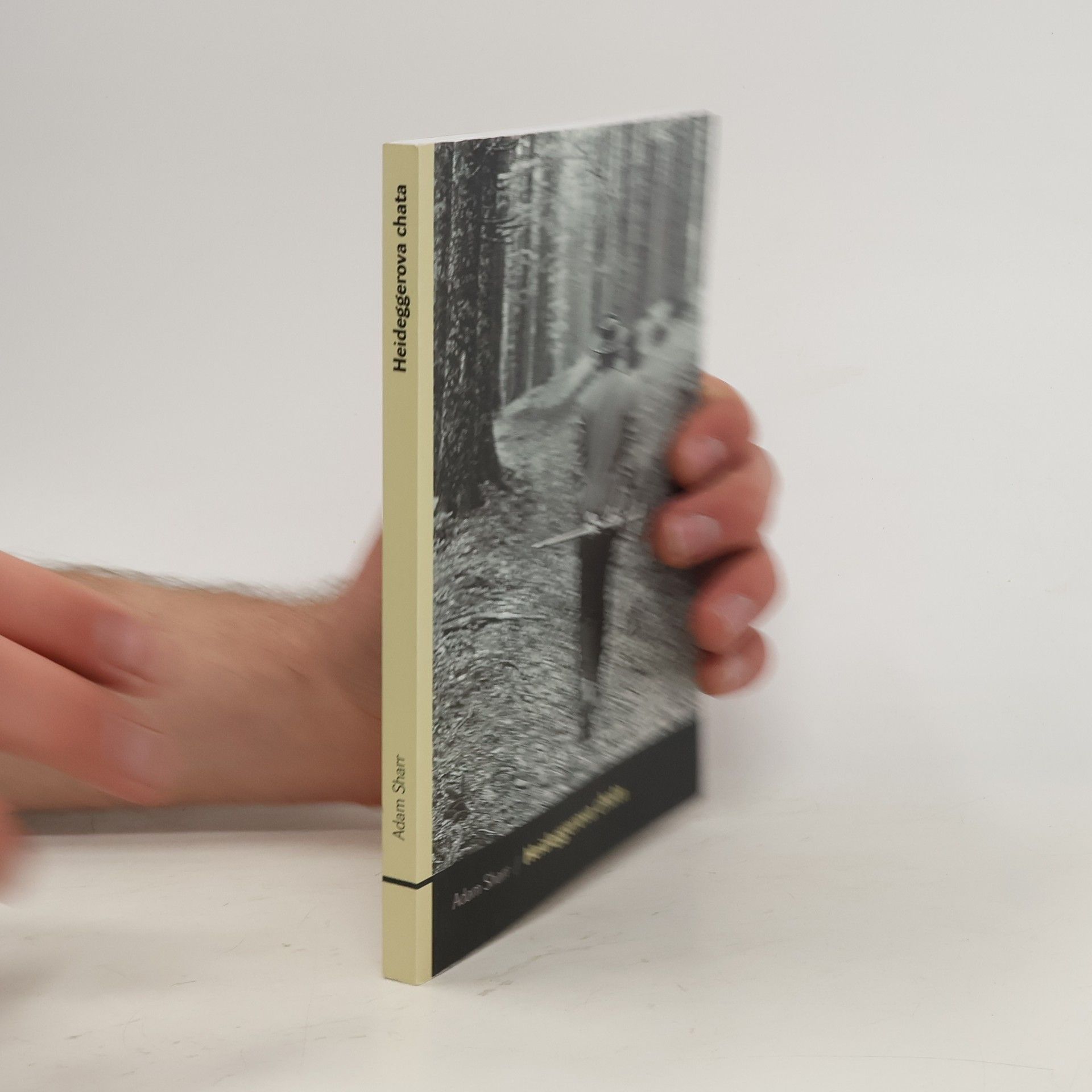Těžištěm knihy je chata jako ohnisko Heideggerova života a díla, respektive otázka, zda a nakolik skutečně takovou váhu měla. Chata v Todtnaubergu je na jedné straně „hlavním hrdinou“ knihy, na druhou stranu je referentem, k němuž se vztahují další témata od obecných otázek týkajících se architektury přes rozbory Heideggerova vztahu k bydlení v jeho dvou konkrétních (venkovské a městské) podobách až po vztah této slavné horské komorní stavby k zásadním Heideggerovým textům o „stavění a bydlení“. Heideggerova chata rovněž obsahuje první český překlad slavné básně Paula Celana Todtnauberg ve vynikajícím básnickém převodu Radka Malého. Todtnauberg navštívila v průběhu desetiletí řada prominentních osobností, například Edmund Husserl, Karl Jaspers, Hans-Georg Gadamer, Karl Löwith, Jean Beaufret, Ernst Tugendhat či Herbert Marcuse a celá řada dalších. Nedílnou součástí knihy jsou fotografie od Digne Meller-Marcovicz a dalších autorů. Sharrův text usiluje v podrobných popisech o co největší autenticitu vnímání této kulturně-historicky výjimečné stavby. Proto zde důležitou roli hrají i řezy a půdorysy, které pomáhají čtenáři se orientovat v minuciózním Sharrově popisu chaty. S popisy chaty a okolní krajiny souznějí citované názvy básní z Heideggerova díla Aus der Erfahrung des Denkens. Zejména tyto pasáže řadí Sharrovo svědectví o Heideggerově chatě svým způsobem rovněž mezi literárně zdařilou beletrii.
Adam Sharr Livres


Architekci często sięgają po myśli filozoficzne, aby znaleźć inspiracje projektowe oraz krytyczne ramy dla swojej praktyki. Jednakże, zrozumienie oryginalnych tekstów bez znajomości kontekstu może być trudne, a dostępne prezentacje rzadko dostarczają szczegółowych informacji o materiałach architektonicznych. W odpowiedzi na te wyzwania powstała nowa seria Narodowego Instytutu Architektury i Urbanistyki, zatytułowana Myśliciele dla Architektów. Cykl ten oferuje zwięzłe wprowadzenie do teorii kluczowych filozofów, którzy pisali o architekturze, umiejscawiając myślenie architektoniczne w ich twórczości oraz przedstawiając ważne książki i eseje. Serię rozpoczyna omówienie pism Martina Heideggera, napisane przez architekta dla architektów. Książka ta budzi kontrowersje wśród heideggerian, z uwagi na istotne rozróżnienie między ontycznym a ontologicznym, które Heidegger sformułował. Architektura jest ontyczna, podczas gdy Heidegger koncentruje się na ontologii. Jego myślenie, które wzywa do głębszego rozumienia bycia i doświadczenia, może pomóc projektantom w tworzeniu lepszego domu dla ludzkiego jestestwa.